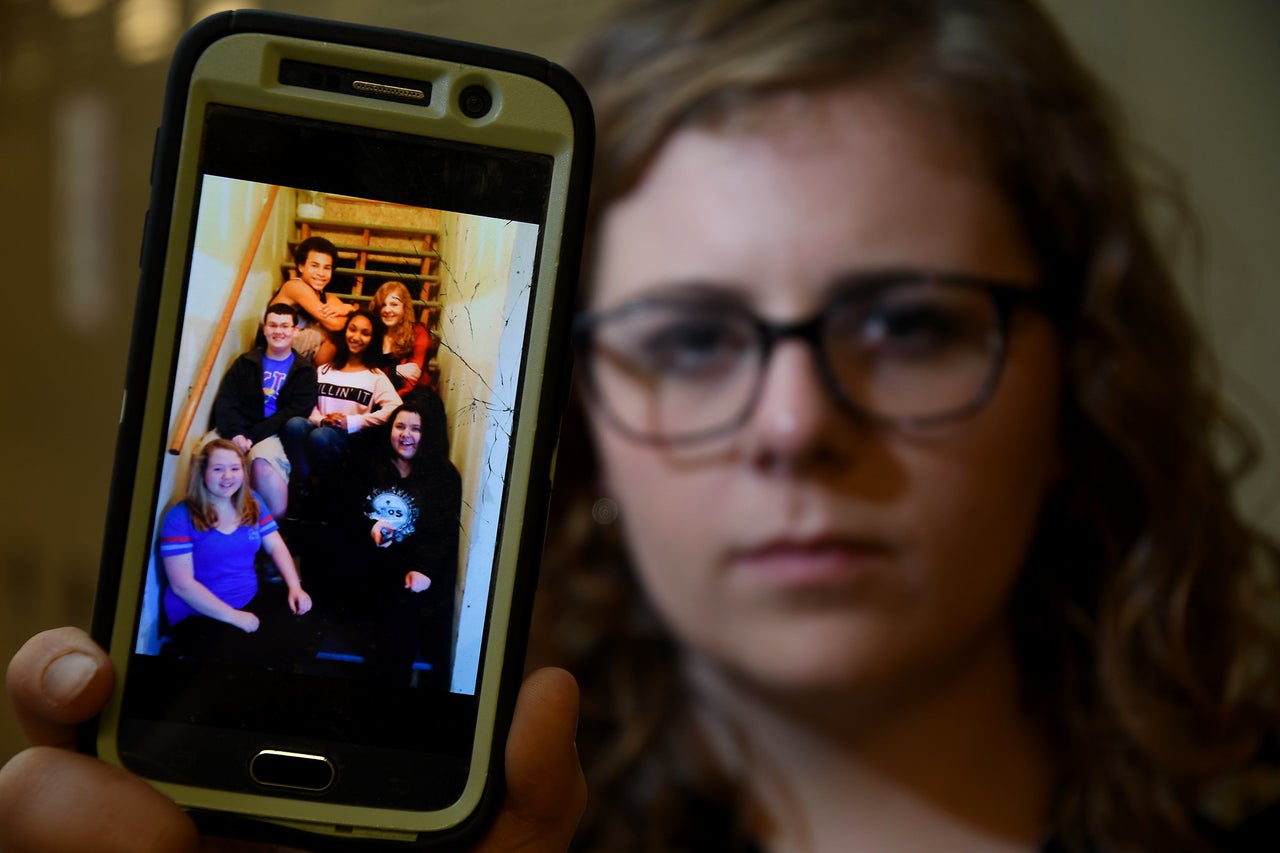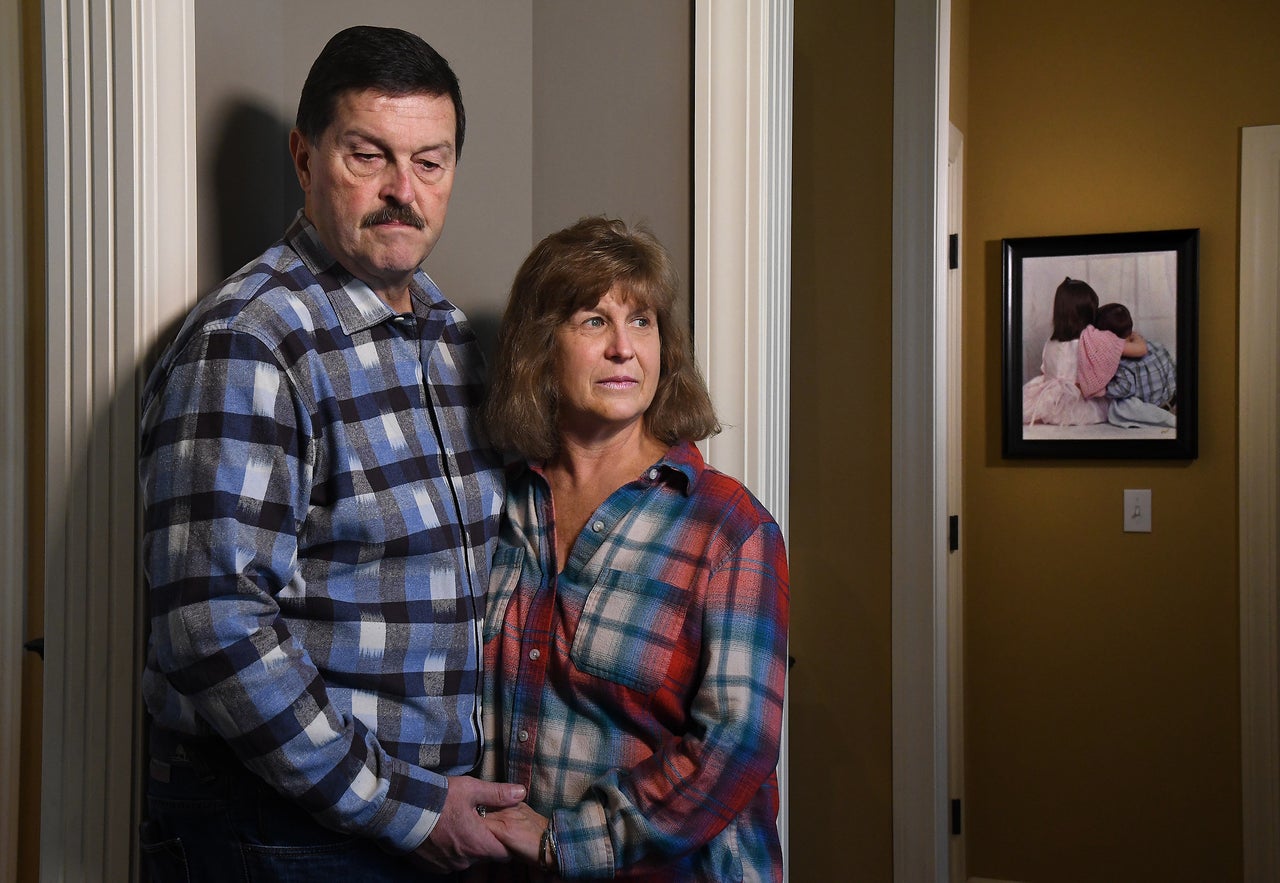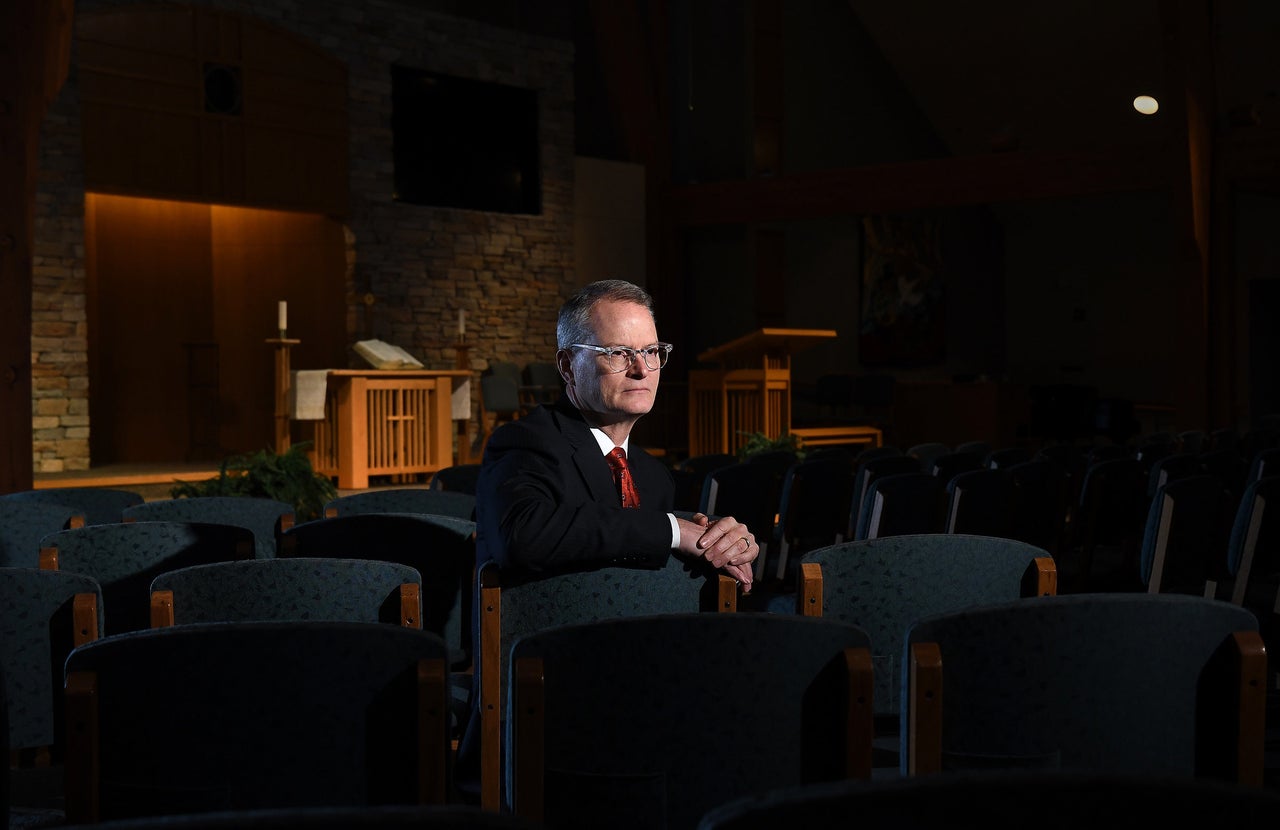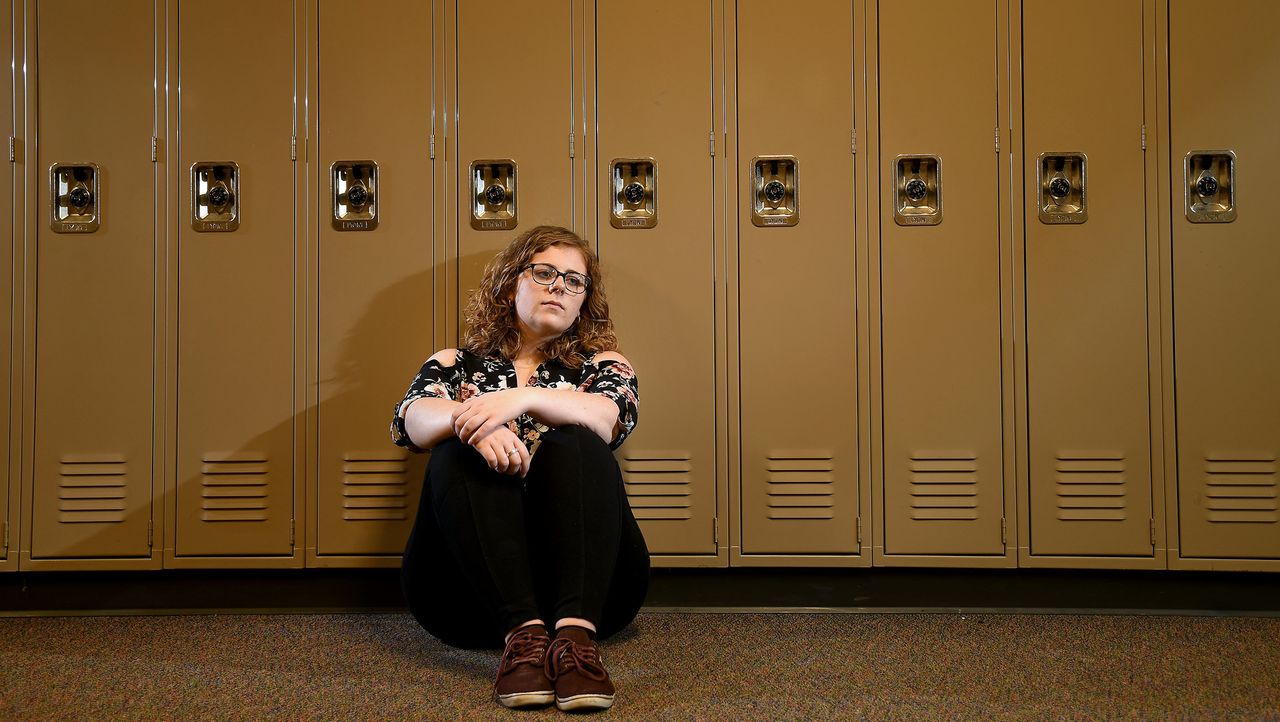JOHNSON COUNTY, Kansas ― Josh Hoston’s friends thought he’d had a fun summer. They were about to be high school freshmen, and the group was buzzing with anticipation. Then, days before classes started, Hoston killed himself.
“His mom found him in the basement,” says 18-year-old Bella Price, one of his good friends and a classmate. “It was a big shock.”
Hoston was popular and smart, according to people in Spring Hill, a tiny town of about 5,000 in Johnson County. He played football and basketball and even set a middle school record running track. He had a loving family. His friends couldn’t make sense of what happened, says Price.
The next summer, another member of Price’s class at Spring Hill High also died by suicide. This second death shattered the community.
Over the last two decades, the suicide rate in America has risen 33 percent, according to statistics released last month by the Centers for Disease Control and Prevention. The country’s life expectancy has declined over the last several years, and suicides are the biggest culprit, after drug overdoses. Among young people specifically, suicide is a leading cause of death.
Johnson County — a predominantly white, affluent set of suburbs near Kansas City — saw itself as one of the most desirable places to live in the sprawling metropolitan area. So suicide was not a topic people here were prepared to confront. Since 2017, at least 14 students have taken their own lives, compared with five student suicides in the previous two years. Each new death brought a fresh wave of helplessness and isolation.
In response, the community is coming together to pull back the curtain on the uncomfortable topic of teen suicide and address it directly.
Last spring, superintendents across the county’s six school districts formed a coalition to make suicide prevention a top priority in schools. Over the next few months, the group met with mental health professionals, law enforcement, hospitals and faith leaders to come up with a plan to train students, teachers and parents to identify a young person in need and how to get them help.
“We decided we need to come out and publicly talk about this,” said Todd White, superintendent of the Blue Valley School District, where five students died by suicide between the spring of 2017 and spring of 2018. “We need to stop making suicide a subject that’s taboo and let the kids help us figure out what to do.”
It was White who first convened the superintendents. Their effort has since expanded beyond school walls, touching many aspects of life in the county. Though it’s too soon to tell how effective it’s been, the CDC says many suicides can be prevented if more people understand the warning signs and ways to intervene.
Dr. John Ackerman, suicide prevention coordinator at Nationwide Children’s Hospital in Columbus, Ohio, says communities need to talk openly about suicide. “We don’t want to be pulling drowning kids out of a river. We want to make sure they’re not jumping into the rapids in the first place,” he says.
Here are stories from some of those whose lives have been touched by teen suicide and who have engaged in the effort to prevent more deaths.
The Student

The screensaver on Bella Price’s phone features a photo of her friends, a grinning bunch crowded together on her family’s basement steps. Bella’s at the top, her red wavy hair tumbling down over her shoulders. Josh Hoston is right next to her with a mile-wide smile and his muscular athlete’s arms folded across his knees.
Three years after his death, Price and her friends are still grappling with the loss. The suicide of another classmate, Tai’Shaughn Mathews, would eventually push Price to action. This fall, she became part of the “teen council,” a group of students from the six school districts in Johnson County who have come together to see how they can work to prevent any more of their friends and classmates from taking their own lives.
They’re learning how to identify trusted adults and encouraging kids to tell someone when they’re worried about a friend or classmate. They’re studying warning signs from peers and working on a prevention campaign dubbed #zeroreasonswhy to change perceptions and behaviors associated with suicide.
“I want to be someone that people feel comfortable bringing their problems to, that someone felt that they could go to if they ever felt like there was no other way out,” Price says.
“Everyone wishes that they could have reassured Josh that like, ‘Hey, you could have come to me and I would have helped you with anything, no matter what.’”
The Family

Seventeen-year-old Chad Harrell was angry his parents wouldn’t let him go to a party on a Sunday night in June last year. The Friday before, they’d found out he’d been drinking and driving. His parents, Sylvia and Nathan, said they weren’t grounding him, but they thought it was not appropriate he go to a party just two days later. Besides, they’d planned a family night with his big sister.
Chad stuck around but when he was disengaged and silent, his dad sent him to his room.
Later that night, his parents stopped by his room to say goodnight. He still seemed steamed. They told him they loved him and went to bed.
Knowing Chad was upset, his mother opened his door to check on him just after midnight. Chad had killed himself.
“And that was the moment this unending nightmare began,” Sylvia said.
Both parents said they were completely broadsided by Chad’s choice.
“We were the closest family I know,” Nathan said. “He didn’t take drugs. He wasn’t a substance abuser. He was a fun-loving kid with a great sense of humor and great friends.”
Now they’re reaching for any possible insights that might explain the loss.
“Chad’s personality from the time he was 2 was independent,” Sylvia said. “He’d always say ‘I do it, I do it,’ if it was holding his hand while we crossed the street or putting butter on his bread.”

The suicide haunts Chad’s 20-year-old sister, Melanie, too. They were best friends. She was in her room across the hall when he took his life. He’d sometimes mention to her that he felt sad but didn’t know why, that he had everything he wanted.
“I hate the idea he was right across the hall in his room and struggling so much,” she said. “I would be there in a heartbeat anytime he needed me, and that he felt so alone and couldn’t reach out is hard.”
The family has gone over and over how they might have missed any warning signs.
“All his friends came over the next day,” Sylvia said. “I asked them what they thought God was saying to Chad. Was he saying, ‘Chad, good job! Way to go!’ They were crying and shaking their heads. They knew he’d made just one final, irreversible bad choice.”
Friends created a GoFundMe account that raised $90,000 after Chad’s death. The family sponsored a golf tournament and raised another $150,000 to fund a new curriculum for students in elementary, middle and high school. It’s designed to encourage kids to talk about their own sadness, depression or anxiety. For the older students, programs will start this winter to reduce stigma around mental health and engage parents and school staff as partners in suicide prevention. The Harrells have created a foundation called Keep the Spark Alive, after Chad’s nickname. The family is in the early stages of collaborating with other efforts across Johnson County targeting the teen suicide epidemic.
“From the minute we lost Chad, we said the only way we’re really going to get through this is to try and make a difference,” Sylvia said. “To give these young people the tools to help each other reach out when suicide seems like the only option.”
The Pastor

When school superintendents in Johnson County were discussing how to address the rising number of teen suicides, one of the first people they contacted was Pastor Adam Hamilton of United Methodist Church of the Resurrection in the town of Leawood.
Hamilton is nationally recognized as a pot-stirrer among his largely Republican flock, unafraid to tackle thorny issues like poverty or suicide.
Hamilton says he’s conducted 32 funerals for young and older people who’ve taken their lives in the past two years. That’s more than he did over his last two decades at the church.
“One thing you recognize when you’re doing a funeral for a teenager,” he said, “is there are a whole lot of other teenagers there who’ve also walked through dark circumstances and the likelihood they will see suicide as an option has increased dramatically. So we have to deal with that.”
At a time when young people are said to be leaving the church, the charismatic pastor has been able to attract thousands of youth at four campuses across the Kansas City metro area.
He talks to them about reading the suicide note his grandmother left when his mother was just 16.
“I tell them she really felt she was doing them a service, relieving them of caring for her and her depression,” he says. “I tell them that the impact of her suicide is being felt by her family 60 years later.”
The church has started education and awareness programs in the wake of the increase in teen suicides. It’s held large and small meetups with counselors, mental health professionals and testimonials from survivors.
Hamilton hopes to switch the dialogue, to talk boldly and honestly about suicide to a generation accustomed to seeing an unvarnished version of life on social media.
“We had a video of a man who’d jumped from the Golden Gate Bridge and talks about regretting it the moment he jumped,” Hamilton said. “If we’re not talking about this from a theological, spiritual and pastoral perspective, then we’re missing out on a huge piece of the puzzle around the number of teen suicides.”
If you or someone you know needs help, call 1-800-273-8255 for the National Suicide Prevention Lifeline. You can also text HOME to 741-741 for free, 24-hour support from the Crisis Text Line. Outside of the U.S., please visit the International Association for Suicide Prevention for a database of resources.
